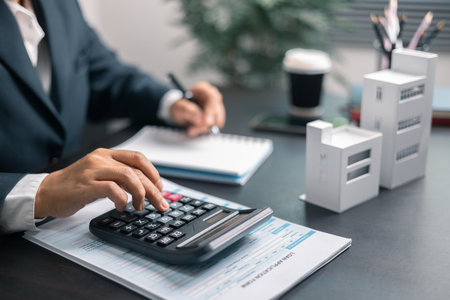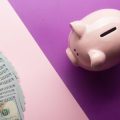Understanding Your Debt
Why It’s Important to Know What You Owe
Before you can start paying off your debts, it’s important to get a clear picture of what you owe. Many Americans juggle multiple types of debt, and understanding the details helps you make smart decisions about where to focus your efforts first.
Categorizing Your Debts
Start by listing out all your debts. This includes credit cards, student loans, auto loans, personal loans, and mortgages. For each debt, note the balance, interest rate, minimum monthly payment, and due date. Here’s a simple table to help you organize:
| Debt Type | Balance | Interest Rate | Minimum Payment | Due Date |
|---|---|---|---|---|
| Credit Card | $4,500 | 19.99% | $90 | 15th of each month |
| Student Loan | $23,000 | 5.5% | $250 | 1st of each month |
| Auto Loan | $12,000 | 4.0% | $330 | 22nd of each month |
| Mortgage | $180,000 | 3.75% | $1,200 | 1st of each month |
Checking Your Credit Reports
Your credit report gives you an overview of all your debts and payment history. In the U.S., you can get a free credit report every year from each of the three major credit bureaus: Experian, Equifax, and TransUnion. Visit AnnualCreditReport.com to check your reports for accuracy and look for any mistakes or unfamiliar accounts.
The Most Common Types of Debt Americans Face
Credit Cards
Credit card debt is common in the U.S. because it’s easy to use cards for everyday purchases. The downside is high interest rates that can make balances grow quickly if not paid off every month.
Student Loans
A lot of Americans have student loans from college or graduate school. These usually have lower interest rates than credit cards but can add up to large amounts over time.
Auto Loans
If you’ve financed a car purchase, you’re likely making monthly payments on an auto loan. These are typically secured loans with moderate interest rates.
Mortgages
A mortgage is often the largest debt most people take on in their lifetime. Mortgages usually have lower interest rates and longer repayment periods than other types of loans.
Summary Table: Common Debt Types at a Glance
| Debt Type | Description | Typical Interest Rate Range (APR) |
|---|---|---|
| Credit Card Debt | Pays for daily expenses; revolving balance possible. | 15% – 25% |
| Student Loan Debt | Borrows for education costs; federal or private lenders. | 3% – 8% |
| Auto Loan Debt | Borrows for car purchase; secured by vehicle. | 3% – 7% |
| Mortgage Debt | Borrows for home purchase; secured by property. | 2.5% – 6% |
The first step to reducing debt is knowing exactly what you owe and understanding each type of debt you’re dealing with. With this foundation, you’ll be able to choose the best strategies for paying down your balances in the next steps.
2. Creating a Realistic Budget
Why Budgeting Matters for Debt Reduction
If you want to pay down credit cards, loans, or other debts, building a budget is a must. A realistic budget helps you see exactly where your money goes and makes it easier to put more toward debt without sacrificing essentials.
Tracking Income and Expenses
Start by figuring out how much money comes in every month—your take-home pay after taxes. Then, list all your expenses, from rent or mortgage payments to streaming subscriptions. Don’t forget irregular costs like car repairs or annual fees. Here’s a simple way to track:
| Income | Amount ($) |
|---|---|
| Paycheck (after tax) | 3,000 |
| Side gig income | 400 |
| Total Monthly Income | 3,400 |
| Monthly Expenses | Amount ($) |
|---|---|
| Rent/Mortgage | 1,200 |
| Utilities & Internet | 200 |
| Groceries | 350 |
| Transportation (gas, insurance) | 250 |
| Credit Card Payments | 300 |
| Student Loan Payment | 150 |
| Entertainment/Subscriptions | 100 |
| Total Monthly Expenses | 2,550 |
Spotting Spending Leaks and Cutting Back
A spending leak is any expense that adds up without you really noticing. This could be coffee runs, unused gym memberships, or impulse buys on Amazon. Go through your bank statements for the past few months and highlight anything you don’t need or rarely use. Cutting back on these leaks can free up more cash for debt payments.
Common Spending Leaks to Watch For:
- Coffee shops and takeout meals
- Streaming services you hardly use
- Name-brand products when store brands work just as well
- Dormant subscriptions or memberships
- Loyalty to convenience stores over grocery stores
Building a Debt-Focused Budget That Works for You
The goal is to create a plan that covers your living costs while making room for extra debt payments. Once you’ve identified all sources of income and necessary expenses, figure out how much you can realistically put toward debt every month without making life stressful.
A Simple Example:
| $ Amount per Month | |
|---|---|
| Total Income | $3,400 |
| Total Living Expenses (excluding debt) | $2,100 |
| Total Debt Payments (minimum) | $450 |
| Extra Available for Debt | $850 |
This means you could potentially pay $850 more than the minimums if you cut back on non-essentials and target those spending leaks.
Your Next Steps: Take Action!
Create your own budget using a notebook, spreadsheet, or budgeting app. Track your spending each week and review it at the end of the month. Adjust as needed so you can prioritize debt repayment while still meeting daily needs. Small changes add up—and the more consistent you are with budgeting, the faster youll see progress on your debt reduction journey.
![]()
3. Choosing a Debt Repayment Strategy
When it comes to paying down debt, choosing the right repayment strategy can make a big difference in your progress and motivation. In the U.S., two popular approaches are the snowball method and the avalanche method. Let’s explore how each works, their pros and cons, and how you can decide which one fits your financial situation best.
Understanding the Snowball Method
The snowball method focuses on paying off your smallest debt first while making minimum payments on all other debts. Once the smallest debt is paid off, you take the amount you were paying on it and add it to the next smallest debt. This process continues until all debts are eliminated. The main advantage of this strategy is that it provides quick wins, helping you stay motivated as you see debts disappear one by one.
How the Snowball Method Works:
| Step | Action |
|---|---|
| 1 | List debts from smallest to largest balance |
| 2 | Pay minimums on all debts except the smallest |
| 3 | Pay as much as possible toward the smallest debt |
| 4 | Once paid off, move to the next smallest debt with more funds available |
The Avalanche Method Explained
The avalanche method prioritizes paying off debts with the highest interest rate first, regardless of balance size. By focusing on high-interest debts, you save money over time because less interest accumulates. While this approach might take longer to see individual balances disappear, it’s often faster and cheaper overall compared to the snowball method.
How the Avalanche Method Works:
| Step | Action |
|---|---|
| 1 | List debts from highest to lowest interest rate |
| 2 | Pay minimums on all debts except for the highest-interest one |
| 3 | Put extra money toward the highest-interest debt first |
| 4 | Once paid off, move to the next highest-interest debt with more funds available |
Snowball vs. Avalanche: Which Should You Choose?
The right strategy depends on your personality and financial goals. If staying motivated with small wins is important for you, the snowball method may be best. If saving money on interest is your top priority and you don’t mind waiting longer for visible progress, consider the avalanche method.
Comparison Table: Snowball vs. Avalanche Methods
| Snowball Method | Avalanche Method | |
|---|---|---|
| Main Focus | Smallest balance first | Highest interest rate first |
| Mental Benefit | Quick wins; more motivation | Saves more money in long run |
| Total Interest Paid | Tends to be higher | Tends to be lower |
| Pace of Debt Elimination | Simpler and steady progress | Might feel slower at first |
Selecting Your Strategy Based on Your Situation
If you’re struggling with motivation or need encouragement to keep going, starting with the snowball method could help build momentum. On the other hand, if your goal is to pay as little interest as possible and you have larger high-interest debts (like credit cards), the avalanche approach may make more sense. Remember, there’s no one-size-fits-all answer—you can even mix methods or switch strategies as your situation changes.
No matter which path you choose, staying consistent is key. Track your progress regularly and celebrate milestones along the way!
4. Negotiating with Creditors and Exploring Support Options
Communicating Effectively with Your Lenders
If you’re struggling to make payments on your credit cards or loans, don’t wait until you fall behind—reach out to your lenders as soon as possible. Most American creditors are open to working with borrowers who show initiative and honesty about their financial situation. When you call or email, explain why you’re having trouble and ask if there are any hardship programs, payment plans, or temporary relief options available.
Key Tips for Talking to Creditors
| Do | Dont |
|---|---|
| Be honest about your financial situation | Avoid or ignore creditor calls |
| Ask about hardship programs or lower interest rates | Make promises you can’t keep |
| Document all conversations and agreements | Get angry or defensive |
| Follow up in writing for confirmation | Miss agreed-upon payments without notice |
Seeking Lower Interest Rates
If your credit is decent and you have a good payment history, you may be able to negotiate a lower interest rate on your credit card or loan. Simply call the customer service number on the back of your card, explain your situation, and ask if they can reduce your APR (Annual Percentage Rate). Even a small reduction can save you a lot in interest over time.
Considering Debt Consolidation
Debt consolidation is a popular strategy in the U.S. for making debt more manageable. This usually means combining several debts—like credit cards and personal loans—into one new loan with a single monthly payment, ideally at a lower interest rate. There are different ways to consolidate debt:
| Type of Consolidation | Description | Best For |
|---|---|---|
| Balance Transfer Credit Card | Move multiple high-interest balances onto one card with an introductory 0% APR offer (usually 12–18 months) | People who can pay off debt quickly within promo period |
| Personal Loan | Take out a fixed-rate loan to pay off existing debts, then repay the new loan in installments over time | Those with good-to-excellent credit seeking predictable payments |
| Home Equity Loan/Line of Credit (HELOC) | Borrow against the equity in your home for a lower interest rate; risk losing your home if you default | Homeowners with significant equity and strong repayment plan |
Leveraging Nonprofit Credit Counseling Services
If navigating these options feels overwhelming, nonprofit credit counseling agencies can help. These organizations, commonly found across American communities, offer free or low-cost advice on budgeting, debt management plans, and negotiating with creditors. A certified counselor will review your finances, help create a personalized action plan, and may even work directly with creditors to secure better terms for you.
Where to Find Help:
- National Foundation for Credit Counseling (NFCC): www.nfcc.org
- Financial Counseling Association of America (FCAA): www.fcaa.org
The right combination of communication, negotiation, and community support can make reducing your debt much more manageable.
5. Building Habits to Stay Debt-Free
Start an Emergency Fund
One of the smartest moves you can make after paying down debt is to build an emergency fund. This is a savings account set aside for unexpected expenses like car repairs, medical bills, or sudden job loss. Having this cushion prevents you from reaching for your credit cards when surprises pop up.
How Much Should You Save?
| Life Situation | Suggested Emergency Fund |
|---|---|
| Single, no dependents | 3 months of living expenses |
| Family or dependents | 6 months of living expenses |
| Self-employed or variable income | 6-12 months of living expenses |
You can start small—try to save at least $500 to $1,000, then build from there. Set up automatic transfers from your checking to your savings each payday so you don’t forget.
Maintain Healthy Credit Habits
Your credit score impacts everything from getting a car loan to renting an apartment. Keeping it healthy helps you qualify for better interest rates and financial opportunities. Here are some American-friendly tips:
- Pay bills on time: Even one late payment can hurt your score.
- Keep balances low: Try not to use more than 30% of your available credit limit.
- Avoid opening too many new accounts: Each application causes a “hard inquiry,” which can temporarily drop your score.
- Check your credit report annually: Get a free report at AnnualCreditReport.com.
Practice Mindful Spending
Staying debt-free means being intentional with every dollar. Mindful spending isn’t about cutting out all fun—it’s about knowing where your money goes and making choices that match your values and goals.
Simple Ways to Practice Mindful Spending
| Habit | Description |
|---|---|
| Create a monthly budget | Track what you earn and spend using apps like Mint or YNAB. |
| Wait before big purchases | If something costs over $100, wait 24 hours before buying. |
| Avoid impulse buys | Make a shopping list and stick to it when at stores. |
| Categorize “wants” vs. “needs” | Ask yourself if a purchase will really improve your life or just provide short-term satisfaction. |
| Set spending goals | Savings for travel, home improvements, or retirement can motivate you to avoid unnecessary debt. |
Your Path to Lasting Financial Wellness
The key to staying debt-free is building daily habits that support your financial health. With an emergency fund, strong credit practices, and mindful spending, you’ll be ready for whatever life throws your way—and stay in control of your money for the long haul.


